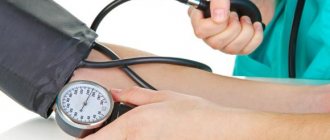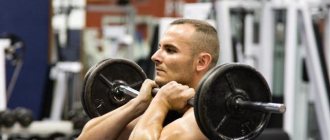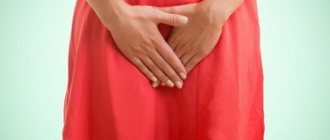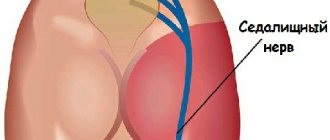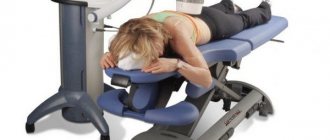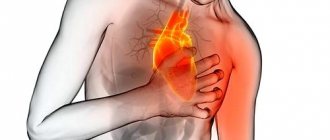A child of preschool age poorly differentiates the source of pain and may complain of headaches due to diseases of the ears, eyes, pain in the neck, etc. A younger child may not complain of pain in the head at all, but the presence of pain can be guessed by the suffering facial expression, by shaking the head or, on the contrary, by its tense fixation. Sometimes a headache is expressed by crying or increased irritability of the child. Often, when children have a headache, they try to squeeze their head with their hands or pull their hair. And only at school age can a complaint of headache be considered reliable.
To find out the causes of headaches, observing loved ones about the child’s behavioral characteristics is very important. It is necessary to try to clarify the localization of the headache: in the frontal, temporal, parietal, occipital regions, in the area of the eyes, ears, nose. It is important to find out the prevalence of pain: one-sided or diffuse. The characteristics of the headache are also important: sudden or gradually increasing, sharp or dull, passing on its own or after taking painkillers or sedatives. Parents may notice symptoms associated with headaches: paleness or redness of the face, weakness, lethargy or agitation, nausea, vomiting, dizziness. And of course, it is very important to try to grasp the connection between the appearance of a headache and some circumstances: a stressful situation, physical activity, fatigue, traveling in transport, taking some medications.
A huge number of diseases accompanied by headaches can be combined into 3 large groups: general diseases of the child, diseases of the brain and diseases of the non-cerebral parts of the head.
A child may have a headache due to various diseases: adenoid growths, meningitis, encephalitis, arachnoiditis, inflammation of the paranasal sinuses, poisoning, fainting, colds, etc. Often a headache occurs in a child during a feverish state, or during excessively long exposure to the sun. Often, headaches in a child occur as a result of physical or mental fatigue (for example, the child played some active games with other children for a very long time, was in a state of mental stress for a long time while doing homework, etc.). Since a headache in most cases is just one of the symptoms of an underlying disease, curing a child of this disease immediately leads to the fact that the headache disappears. Eliminating other causes of headaches also quickly leads to an improvement in the child’s well-being. .
Cephalgia in young children
A peculiarity of the course of cephalgia in infants and children under 3-4 years of age is that often the child cannot express his complaints.
Most often, the cause of pain syndrome is hydrocephalus, intoxication, congenital pathologies of blood vessels and brain tissue, and other diseases. An attack of pain may be accompanied by such phenomena as:
- restlessness and irritability of the child;
- refusal of food;
- intense crying, intensifying with changes in the position of the body and head, noise and light stimulation;
- spontaneous cries and shudders;
- frequent regurgitation and vomiting;
- bulging and pulsation of the fontanel;
- stiffness of the body and limbs;
- head tilt, etc.
Such symptoms should not go unnoticed by parents and are a reason to immediately consult a doctor.
Dangerous combination with other medications
Taking several medications together can cause an undesirable reaction in the body: weaken the effect of the drug, excessively enhance its effect, cause side effects, or even in some cases lead to death. People suffering from chronic diseases should take a particularly responsible approach to this.
The combination of the following drugs is not recommended:
- NSAIDs and Cardiac aspirin. These drugs compete with each other in the body for the same enzyme. Their combined use reduces the effectiveness of aspirin. Both drugs have side effects on the stomach lining, which increases the risk of ulcers and stomach bleeding.
- NSAIDs and Warfarin. Causing a side effect in the form of decreased blood clotting, NSAIDs in interaction with Warfarin increase the risk of developing dangerous bleeding.
- Painkillers and sedatives. The simultaneous use of such drugs increases their toxic effects on the body, which leads to an overdose. The result is a decrease in breathing rate and heart contractions, in some cases to a fatal level.
- Painkillers and antidepressants. The combined effects of such drugs provoke the formation of gastric and intestinal bleeding. Accompanying symptoms: anxiety, increased body temperature, increased breathing and heart rate.
- Strong sedatives such as Phenazepam and antibiotics. The group of antibiotics is most dangerous in its interaction with other drugs. This is due to the serious negative side effects that can occur when consuming them.
Headache in children 6-10 years old and adolescents
Cephalgia in children of this age group can be acute, paroxysmal or chronic in nature and is a sign of various diseases. Let's look at the most common causes of headaches.
Vascular cephalgia is a symptom of diseases such as VSD (vegetative-vascular dystonia), hypotension, hypertension, dyscirculatory encephalopathy, etc. Characteristic are pulsating, dull, aching, bursting headaches, most often localized in the occipital region. Cephalgia is accompanied by nausea, darkening of the eyes, dizziness, and pale skin.
Migraine . Age peaks of the disease occur at 6-7 and 12-14 years and correspond to the beginning of schooling and the puberty period in a child’s life. The disease is characterized by attacks of acute throbbing headaches lasting up to 2-3 hours. Often the onset of an attack is heralded by the so-called aura: visual disturbances, lethargy and lack of appetite, tinnitus, dizziness, numbness of the face and fingertips, etc. The pain can be one-sided or two-sided, accompanied by vomiting, which brings relief.
Tension headaches are the most common in school-aged children and adolescents. Its occurrence is associated with psycho-emotional overstrain, incorrect position of the body and head when sitting at a desk, computer desk, excessive visual stress (a child spending a long time in front of the TV, monitor), incorrect spectacle correction of visual impairments, stress, and excessive physical exertion. The headache is of a compressive nature, has no clear localization, and may be accompanied by nausea and dizziness.
Cephalgia in inflammatory diseases of the central nervous system is severe and is accompanied by vomiting, convulsions, loss of consciousness, and various neurological disorders. The pain is highly intense and intensifies when the child’s body position changes or when exposed to light, tactile and noise stimuli. In severe cases of the disease, the child is in the “pointing dog position” - on his side, with his limbs bent towards the body and his head thrown back. These symptoms are a reason to immediately seek emergency medical help.
Cephalgia is often the only early sign of brain tumors . Often such headaches appear in the morning, are persistent and are accompanied by repeated vomiting that does not bring relief.
Traumatic brain injuries and post-traumatic conditions are often accompanied by headaches. Even in the absence of visible damage to the skull, the child complains of a localized or diffuse headache, accompanied by dizziness, nausea, vomiting, and visual disturbances. In severe cases, the attack may be accompanied by convulsions and loss of consciousness.
Psychogenic cephalgia can be paroxysmal (lasting up to 2 weeks) or permanent. Most often, children aged 8-13 years suffer from psychogenic cephalgia. The pain is moderate, dull, compressive, without clear localization. Various stressful and conflict situations provoke the onset of an attack.
Why does a child often have a headache and feel sick?
A headache combined with nausea is a reason to suspect food poisoning.
Children under 5 years of age react especially sharply to low-quality products, food additives, synthetic emulsifiers and flavorings. Nitrates from sausages are especially dangerous. They are added to dumplings and sausages for a beautiful pink color. Without the additive, the minced meat is grayish-brown, and the product does not have a long shelf life. Therefore, the meat processing industry is nowhere without nitrates. Flavoring additives of synthetic origin also add an appetizing aroma. An adult will not feel ill after a large portion of sausages or boiled milk, but a dose of sodium nitrite will be enough for a child. The substance, once in the blood, causes vasoconstriction, reduces the amount of oxygen in the blood and provokes spasms. Including cerebral vessels.
The head begins to pound due to the dose of tyramine. There is a lot of substance in aged cheeses. If adults easily digest the substance, then the digestive system of a preschooler cannot cope with it. In addition to cheeses, there is a lot of tyramine in nuts and yeast.
First aid for headaches in children
First of all, it is necessary to find out the cause of the headache. If the disease that caused cephalalgia is known (ARVI, otitis media, sinusitis, etc.), then proper treatment of the underlying pathology will relieve the child of headaches. In addition, parents can take measures to alleviate an attack of cephalalgia:
- provide the child with rest in a darkened room with access to fresh air;
- exclude light and sound stimuli;
- if the child is hungry, offer him some light food;
- taking medications based on ibuprofen or paracetamol in a dosage appropriate to the child’s age.
If the above measures do not bring relief within the next few hours, you should seek medical help. Also a reason for immediate medical intervention are such features of a child’s headache as:
- high pain intensity;
- attacks of cephalalgia more than once a month;
- night and morning pain;
- accompanying symptoms: dizziness, nausea and vomiting, blurred vision, mental changes, disturbances of consciousness, coordination, sensitivity, etc.;
- meningeal signs – hyperthermia, “pointing dog pose”, convulsions, loss of consciousness, neurological symptoms.
The mechanism of occurrence of cephalalgia
The structure of the child’s nervous system is similar to adults, however, in children the processes of inhibition predominate over the processes of excitation, and the structures of the brain are much more fragile, and therefore any pathological process causes much more significant harm, and its consequences can be much greater than in adults.
Mechanisms of headache:
- the first thing you need to understand is that the brain is not capable of pain sensitivity, and therefore it does not hurt;
- pain (cephalgic) syndrome in the head occurs when exposed to pain receptors, which in a child are located in the vessels of the meninges and in the membranes themselves, the mucous membranes of the oral and nasal cavities, muscle masses and nerve plexuses of the head and neck.
Migraine
The cause of migraine is a hereditary factor. Most often, this disease is transmitted through the maternal line. With migraine, unilateral throbbing headaches are observed, they are accompanied by nausea, vomiting and photophobia. An attack can last from several hours to three days. Most often, migraines occur in adolescents, this is due to hormonal changes in the body.
The frequency and duration of a migraine attack is influenced by:
- stressful situations;
- physical overload;
- lack of sleep, chronic fatigue;
- hypothermia;
- menstrual cycle;
- eating fatty, fried, spicy foods;
- abuse of watching television and computer games;
- smoking and alcohol;
- weather changes;
- exacerbation of general diseases.
If a headache occurs during an exacerbation of a migraine, the child needs complete rest. Put him in a quiet room, dim the lights. Eliminate smoked, fried, fatty foods, chocolate, coffee, cocoa, and soda from the menu. Let the child's diet consist of light dishes of vegetables and fruits. Frequent, copious drinking of juices, fruit drinks, and compotes is allowed.
Usually a migraine attack disappears after a short sleep in the fresh air or in a well-ventilated room. A head massage with light movements of the fingers from the forehead to the back of the head relieves pain.
If your child often has headaches, you can try giving him freshly squeezed blackcurrant or potato juice. These medications should be given 2 tablespoons twice a day throughout the attack.
Traumatic pain
If a baby falls and hits his head, a bruise or bump usually appears at the site of the injury. You need to be careful about falls, as they can lead to concussions or traumatic brain injuries.
If such a misfortune does happen, then as soon as possible, take the child in your arms, caress him, and apply a towel soaked in cold water to the bruised area for 10 minutes. You can also apply ice, but be sure to wrap it in a towel or any other cloth to prevent frostbite.
If the pain does not go away for a long time, the child turns pale and faints, then immediately consult a doctor.
Viral and infectious diseases
Any viral and infectious diseases begin with pain in the head. Intoxication is the main cause of the disease. Toxic substances formed during the life of viruses and microbes poison the child’s body. Common symptoms of intoxication also include:
- Weakness.
- Fatigue.
- Drowsiness.
- Nausea.
Along with the above symptoms, body temperature increases, body aches and muscle pain appear. Therefore, if a child has a severe headache and is shivering, it is likely that he has an acute respiratory viral infection or acute respiratory infection. A pediatrician can make a diagnosis when examining a small patient.
VSD syndrome (vegetative-vascular dystonia)
Frequent headaches in a child aged 7–10 years are often associated with changes in vascular tone. The reasons may lie in brain hypoxia, a clear sign of which is constant yawning. In addition to oxygen starvation, the development of VSD syndrome can be influenced by diseases associated with dysfunction:
- Of cardio-vascular system.
- Kidney.
- Liver.
Medical statistics claim that VSD affects children exposed to constant stress and overwork. The atmosphere in the family plays an important role in the development of the disease. With constant scandals in the house, the child gets a severe headache. VSD syndrome resolves when the underlying disease is eliminated and the patient’s emotional background is stabilized.
Head pain is accompanied by disturbances in heart rate and blood pressure. Such children are subject to frequent mood swings and excessive irritability.
Emotional overload
Why does the child often have a headache in this case? Any stressful situation for a child is a real shock to his nervous system. Children may be nervous about separation from their parents, for example, while in kindergarten, older children often worry about exams and unlearned lessons at school. Of course, it’s impossible to completely get rid of stress in life. But parents must teach their child to be able to withstand life’s troubles and not get lost.
The best treatment and prevention is personal example. Try to redirect your child’s attention, let there be room for joyful emotions in your life.
Pain in the head due to psychological problems is usually nagging, aching, and covers the entire head. In this situation, the child should be reassured, asked to talk about his problems, listened to and reassured. Various breathing practices, meditation, massage, and a simple yoga routine have a good relaxing effect. It is very useful to take a walk before going to bed, not watch TV at night and not discuss family problems in the evenings.
Spend more time with the whole family, have busy weekends, take up active sports - all this contributes to emotional rest and peace of mind for the whole family.
Pain due to pathological processes of ENT organs and eye diseases
Chronic and acute diseases of the sinuses, throat and ears are often accompanied by pain in the head. Children react especially acutely to sinusitis and sinusitis. Toxic effects on the membranes of the brain lead to attacks of headaches and vascular disorders. Cephalgia will go away only after successful treatment of the underlying disease.
Headaches that occur in a 6-year-old child are usually associated with prolonged eye strain. When reading books, drawing and watching TV, the optic nerve receives a large load that the child’s body is unable to cope with. The headache is accompanied by pain in the eyes, tearing and blush on the cheeks. The trouble can be easily eliminated if you rationally distribute the child’s work and rest schedule. If your child cannot live even an hour without a book, teach him to relax. Eye exercises will help relieve tension and eliminate headaches.
Causes of childhood cephalgia
Of course, it is almost unrealistic to list all possible situations in which headaches in children are possible, since this manifestation can accompany almost any somatic and infectious diseases, and is also a manifestation of many traumatic, hypoxic and toxic processes. In addition, it is important to understand that the development of pain can be provoked by several processes at once, a combination of negative factors and problems from the body, the influence of external and internal influences. But among the variety of processes leading to cephalalgia in childhood, we can identify the most frequently occurring and highly influential causes.
The most common and frequently recorded causes of pain in childhood are:
- Consequences of head injuries resulting from concussions or bruises, falls or blows
- Reactive reactions that occur in response to sudden changes in external environmental factors - temperature fluctuations, precipitation or changes in the geomagnetic situation
- Secondary pain of a reactive nature, formed as a result of changes in the body of children against the background of the development of allergies, prolonged sleep or constant lack of sleep, as a reaction to certain medical procedures
- Reactions to infectious agents, taking certain medications or nutritional supplements, certain types of foods, as a consequence of dehydration, or a response to problematic functioning of certain internal organs (kidneys, liver, heart).
- Painful sensations that form inflammatory processes localized in the paranasal sinuses (sinusitis, ethmoiditis or frontal sinusitis, pansinusitis)
- Pain arising from an overdose of analgesic drugs that were used without indications for them
- Headaches associated with tension, if children are very tired due to prolonged mental stress, prolonged sitting at the monitor
- Migraine pain, which varies significantly in severity and duration, as well as the type of pain, or cluster headaches, which rarely occur in adolescents, have an unclear origin to date.
The occurrence of any child’s complaints of headaches, even minimal and not acute, localized in the temples, frontal area or back of the head, should be a reason to consult a doctor, especially if there are no signs of colds or somatic infections, and headaches recur repeatedly.

